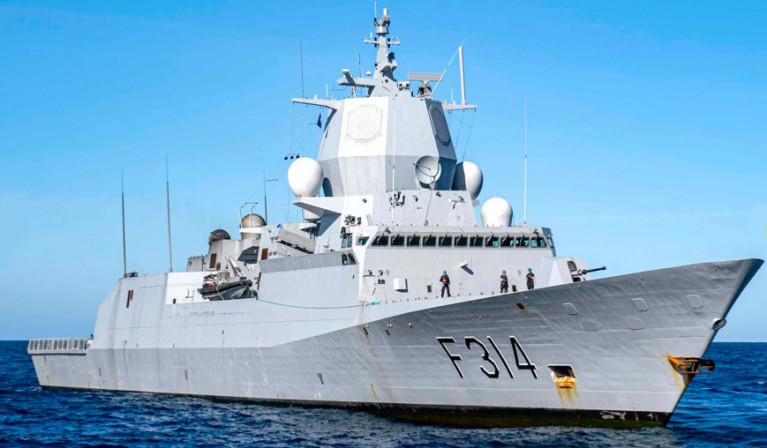Displaying items by tag: Norwegian Navy
An Irish Coast Guard helicopter successfully completed a long range rescue operation off the south west coast to bring a sick seaman from a Norwegian naval ship to hospital in Cork.
The Shannon based Irish Coast Guard Sikorski helicopter, Rescue 115 was tasked (on Tuesday) to remove the sick seaman from the Royal Norwegian navy frigate, HNoMS Thor Heyerdahl some 300km off the Cork coast.
The Norwegian ship had contacted the UK rescue authorities to request a medical evacuation and the UK authorities in turn relayed the request to the Irish Coast Guard as the ship was within the Irish sphere of operations.
The HNoMS Thor Heyerdahl was almost at the furthest limit of the Irish Coast Guard’s helicopter’s range so Rescue 115 refuelled in Castletownbere in West Cork before proceeding to rendezvous with the ship.
For further reading The Irish Times reports.
European Naval Flotilla Docks in Dublin
Of the foursome, only ENS Tasuja is the odd one out, she is a diving and support vessel whereas the rest are all a combination of minehunters / minesweepers. ENS Tasuja is from the Lindormen-class and was built in Denmark in 1977. She is 44.5 meters long, has a maximum speed of 14 knots, and has a crew of 28.
HNoMS Maaloey is an Oksøy-class minehunter which has a catamaran hull constructed of fibre-reinforced plastic which has a very low magnetic signature. She can carry two ROV's and the same number of rigid inflatable boats (RIB).
Above: The Norwegian Navy’s catamaran minehunter HNoMS Maaloey detonates a sea-mine
She is almost identical to the Alta-class leadship HNoMS Alta which provided escort duties during the official state visit of King Harald V and Queen Sonja of Norway, on board the royal yacht K/S Norge in 2006. She arrived in Irish waters, firstly calling to Dun Laoghaire Harbour, where the royal couple boarded the royal yacht at the East Pier. From there she sailed the short distance across the bay to Dublin Port and her last Irish call was to Cork.
ORP Flaming is a mine countermeasures vessel which operates in minesweeping and minehunting. The vessel is designed to trace such devices and make safe fairways for shipping. She can detect anchored mines 1600m from the ship and bottom mines located 600m below the ship's keel. In addition she can lay mines of six different types.
FGS Überherrn is a Kulmbach Class minehunter, in service with the German Navy since commissioning in 1989. She was originally built as a Hameln Class (SM 343) minesweeper by STN Systemtechnik Nord, but was converted to the Kulmbach Class. She has an overall length of 54.4m, a width of 9.2m and a draft of 2.5m and a displacement of 635 tonnes. Armament comprises two, four-cell Stinger missile launchers firing FIM-92 Stinger surface-to-air missiles. There are a crew of 37, which includes four officers, 20 petty officers and 13 ratings.
The flotilla are moored two abreast alongside Sir John Rogersons Quay (berth No. 8), which is located on the south quays between the Samuel Beckett and East-Link Bridges. Of the four naval ships, FGS Überherrn is the first to depart on Sunday, the other vessels are to depart on Monday. The vessels will provide an opportunity to view at close quarters a variety of naval architecture design and navies from northern Europe.

























































